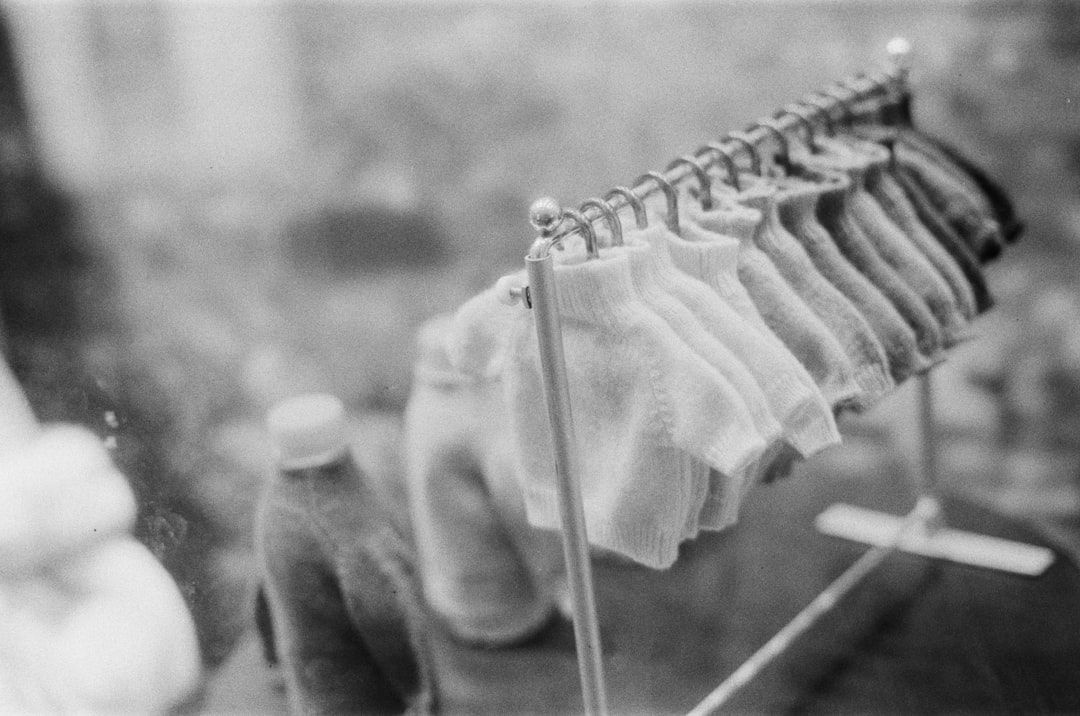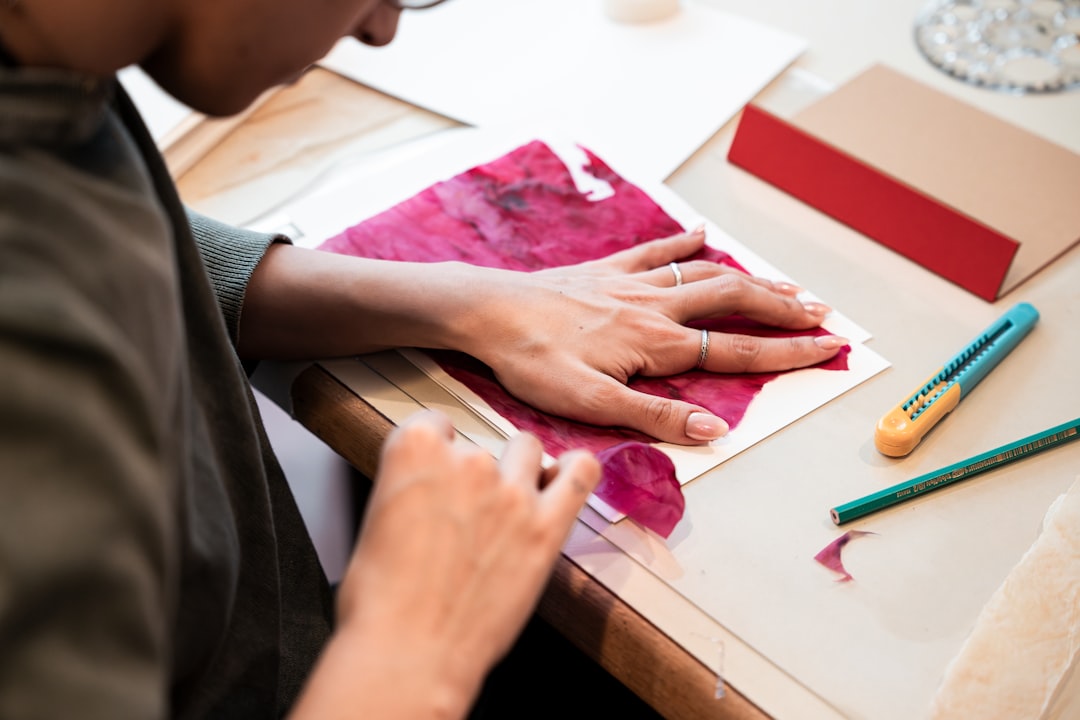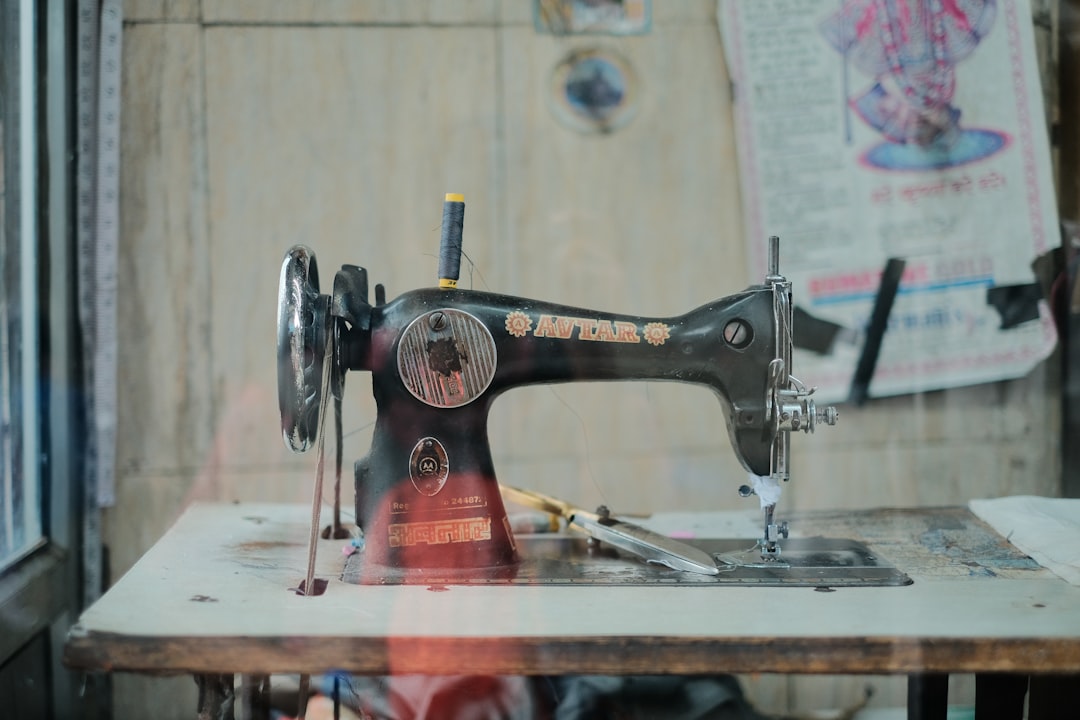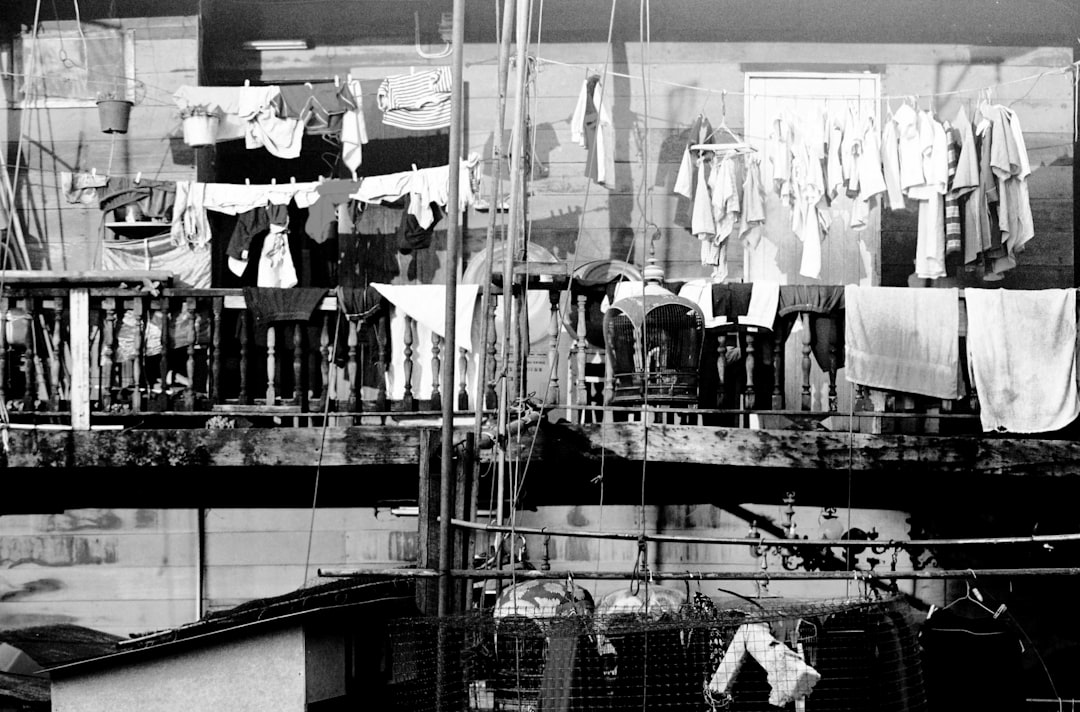

Engage prospects with a scan and streamline customer engagement with FREE QR code marketing tools by Sona – no strings attached!
Create a Free QR CodeFree consultation

No commitment

Engage prospects with a scan and streamline customer engagement with FREE QR code marketing tools by Sona – no strings attached!
Create a Free QR CodeFree consultation

No commitment
Dressmaking schools are undergoing a notable transformation as education merges with digital innovation. In a field traditionally dominated by hands-on instruction, printed course materials, and manual feedback forms, the need for more agile, interactive, and measurable engagement has never been clearer. Institutions offering fashion design courses, tailoring courses, and couture training face growing competition, evolving student expectations, and a mandate to prove value both online and offline.
Many schools struggle with missed opportunities to capture the voices of high-value students and applicants, often because feedback and interest signals are fragmented or never tracked. This lack of visibility, especially when interactions do not get logged in CRMs or forms go unfilled, can mean that enthusiastic learners or promising prospects slip through the cracks.
QR codes have rapidly emerged as a practical solution, empowering dressmaking schools to gather instant feedback, streamline registration for sewing classes, and keep students and staff actively involved in the learning journey. The beauty lies in their simplicity: with a single scan, no app required, students, alumni, and visitors can share insights, review classes, or explore dressmaking school rankings, while the school uncovers valuable, previously anonymous engagement. When paired with a central platform like Sona QR, teams can connect every scan to a measurable outcome, creating a reliable bridge between offline instruction and digital insight.

Traditional, manual feedback loops such as paper surveys, passive comment boxes, or occasional email requests often fail to surface the real sentiments and actionable critiques of students and visitors. These analog methods are easy to ignore or forget, and they rarely capture context about which class, instructor, or project prompted the feedback. The disconnect leads to missed signals, unaddressed frustrations, and ultimately a loss of trust or future enrollments.
QR codes bridge this gap by transforming every classroom, workshop, or seminar into an interactive feedback channel. They make it effortless for students to scan on the spot and complete brief forms via QR codes tied to a specific course, instructor, or topic. When integrated with a CRM or analytics tool, schools can turn raw opinions into structured data that fuels curriculum improvements and better student experiences.
Here is how to approach it strategically:
Many schools have found that tying QR-driven insights directly to student records, automatically linking feedback to individual classes or instructors, radically improves both the speed and quality of internal analysis. This data can feed into faculty performance reviews, course updates, and program accreditation documentation, creating a virtuous cycle that strengthens both educational outcomes and school reputation.

Dressmaking schools encounter distinct offline to online integration challenges, balancing hands-on learning with students who increasingly expect digital convenience. Instructors rely on practical demonstrations and studio practice, yet students research programs online, compare course outlines, and expect prompt updates when schedules change. Without a reliable way to connect these worlds, valuable intent signals remain anonymous, and decision-critical information can be hard to trace back to specific moments on campus.
QR codes simplify bridging these worlds. They are small, scannable gateways that transform physical moments into digital actions: a poster becomes a sign-up flow, a class handout becomes a feedback channel, and a studio showcase becomes a sharable portfolio link. Each scan creates a trackable event that schools can analyze and optimize over time.
By mapping student or prospect engagement through QR code scans, dressmaking schools can proactively identify when a course outline needs refinement, which events consistently draw qualified prospects, and where follow-ups are most likely to turn interest into enrollment. Over time, this creates a more responsive, student-centered culture that improves outcomes and strengthens competitive advantage.

Dressmaking programs often juggle disparate systems: manual class lists, email distribution, social media groups, and ad-hoc event RSVPs. QR codes help unify these touchpoints by steering scanners to a well-defined digital destination and capturing that interaction as a trackable event. Choosing the right QR format for each scenario amplifies effectiveness and reduces friction for students and staff.
Static QR codes are best for permanent resources, such as a general course catalog PDF or an evergreen alumni contact page. Dynamic QR codes are essential for time-sensitive or evolving resources, such as in-term surveys, pop-up workshops, or open day registrations, since destinations can be updated without reprinting.
Key applications include:
Centralizing QR assets in a platform such as Sona QR helps organize codes by campaign or location, track performance across formats, and quickly retire or replace outdated destinations. Over time, you will identify which formats and content types drive the highest engagement for your specific student population.
Schools regularly face the problem of wasted outreach and missed conversions. Flyers get posted, handbooks get distributed, and events draw foot traffic, yet few of those interactions translate into traceable actions or follow-ups. Without a clear call to scan and a compelling reason to do it, vital engagement moments pass without a digital signal.
Optimal QR placement transforms these questions into measurable growth levers. Start by mapping where decision moments happen on campus and within your marketing materials, then introduce QR codes that match the intent of those moments. The goal is to reduce friction, connect curiosity to action, and capture data that informs the next step in the journey.
Opportunities include:
Schools that align QR placement with student decision points report meaningful increases in measurable inquiries, better conversion from event attendees to applicants, and faster adaptation to emerging needs. When combined with clear calls to action and easy destinations, QR codes make growth both visible and repeatable.

Missed opportunities often stem from the inability to capture and respond to informal student signals. Casual comments after class, quick questions in hallways, or silent admiration at showcases seldom make their way into systems. QR codes change that by making it normal and easy to share feedback, request information, or explore opportunities at the moment of interest.
Here are high-impact use cases tailored to dressmaking schools:
Each use case emphasizes a short, benefit-driven call to action and a reliable destination. The best outcomes occur when scanning becomes part of the school culture and when students see that their scans lead to visible improvements or opportunities.
A recurring challenge for dressmaking schools is the inability to identify or nurture high-value prospects when initial contact is anonymous or incomplete. An open day attendee might love a tailoring demo yet never fill out a form, or a visitor could browse graduate portfolios without revealing their interests. Without signals, marketing and admissions teams cannot segment or prioritize their efforts.
With QR codes, every scan becomes a structured signal that reveals intent and context. By deploying unique codes across courses, events, and materials, you can segment audiences based on what they scanned, where they scanned, and when they scanned. This data fuels precise retargeting via email, SMS, and paid ads, while also alerting staff to follow up at the right moment.
As you build these segments, set up rules that escalate care for your most engaged audiences. For instance, a prospect who scans a couture workshop flyer, then an instructor bio page, and finally an application checklist is far more qualified than someone who scans once at a campus entrance. Surface these high-intent signals to admissions for timely outreach. See the Sona retargeting playbook for tactics you can adapt.
Disconnected outreach leads to inconsistent messaging and wasted spend. Flyers, social posts, email campaigns, and campus events often operate in silos, making it difficult to attribute outcomes or understand the student journey. QR codes connect these channels by turning every physical or digital asset into a measurable entry point that funnels engagement to a central data layer.
When QR codes are part of a unified strategy, administrators can see how channels work together, which assets drive action, and where prospects stall. The result is a cohesive experience for students and a clearer path for schools to optimize budgets and content.
In a centralized platform like Sona QR, you can manage all codes and campaigns, view cross-channel performance, and connect scan activity to your CRM or marketing automation tools. This unified view turns QR codes into the connective tissue of your marketing mix.
Widespread QR code adoption can underperform if it lacks clear goals, trackability, and thoughtful execution. A structured approach helps ensure each deployment advances a specific objective, delivers a smooth student experience, and produces data you can act on.
Start by defining one or two outcomes per campaign, such as increasing post-class feedback, boosting event RSVPs, or improving application starts. Then select destinations and placements that match the desired behavior. Test rigorously on multiple devices, and be intentional about branding and calls to action.
End each campaign with a short retrospective: what worked, what did not, and what to try next. Share results with faculty and staff so that QR adoption becomes a collaborative effort rather than a siloed initiative.
Schools frequently face frustration tracking which efforts drive enrollments, feedback, or alumni engagement. A scan without context or follow-through is only a surface-level metric. To prove impact and improve performance, you need to map scan events to downstream actions such as form completion, consultation bookings, or application starts.
Modern QR analytics close this gap by connecting scans to journeys. With a platform like Sona QR, you can capture detailed scan metadata, enrich CRM records, trigger workflows, and attribute outcomes to campaign sources. Adding Sona brings identity resolution and multi-touch attribution that help you connect previously anonymous engagements to known contacts and revenue outcomes.
The result is a comprehensive view of how offline interactions contribute to online outcomes. Armed with this data, you can prioritize high-performing placements, retire underperformers, and justify budget allocation with evidence rather than guesswork.
Even the best-designed QR codes will underperform without internal alignment and creative deployment. Success often hinges on faculty enthusiasm, student awareness, and well-chosen placements that make scanning feel natural and valuable. Give your community clear reasons to scan, then make sure the experience delivers on the promise.
Consider piloting a small set of campaigns, documenting learnings, and sharing quick wins. Once the value is visible, expanding QR codes across studios, events, and marketing assets becomes far easier.
Treat these best practices as a reusable playbook. Revisit placements each term, refresh CTAs, and showcase internal success stories to keep momentum strong.

Institutions that commit to integrated QR strategies often report relief from persistent frustrations: low feedback uptake, lost pipeline leads, and uncertainty about how events or curriculum changes influence outcomes. By making QR scanning part of the school fabric, teams transform daily interactions into data that informs smarter decisions.
These examples illustrate what is possible:
By embedding QR codes into day-to-day operations and standout moments, schools create a continuous feedback and engagement loop. Insights feed back into teaching methods, event programming, and marketing strategy, producing a compounding advantage over time.
Dressmaking schools that prioritize real-time engagement and feedback consistently report stronger educational and career outcomes. QR-enabled workflows help instructors close learning gaps quickly and help administrators see which initiatives deserve further investment. Alumni often cite these responsive systems as a key factor in feeling supported during and after their studies.
Industry partners notice the difference as well. Employers seek graduates who are adaptable, collaborative, and comfortable with digital tools. Programs that blend practical instruction with data-informed iteration tend to produce graduates who transition smoothly into fast-paced environments.
For students weighing their options, scanning a QR code to compare curricula, explore alumni stories, or submit questions is now routine. Schools that meet them in these moments not only collect data, they also demonstrate a culture of responsiveness that builds trust.
QR codes have become an essential strategic asset for dressmaking schools, connecting every classroom, event, and interaction with actionable digital insight. By reimagining paper-heavy processes and adopting a culture of scanning with purpose, schools amplify engagement, gather richer feedback, and build seamless student journeys that elevate reputation, enrollment, and long-term success.
Harnessing the right deployment and analytics approach allows dressmaking schools to minimize lost opportunities, from untracked high-interest prospects to silent student churn, while building a culture of continuous improvement. Platforms such as Sona QR make it simple to generate, manage, and track codes across the entire school, while Sona.com connects scans to outcomes through identity resolution and multi-touch attribution. Start creating QR codes for free.
QR codes have transformed dressmaking schools from traditional feedback methods into dynamic, real-time engagement tools. Whether it’s gathering instant student and client feedback, improving course offerings, or enhancing the overall learning experience, QR codes replace cumbersome surveys with quick, mobile-friendly interactions that deliver actionable insights. Imagine knowing exactly which classes resonate most with your students — and being able to adjust your curriculum immediately based on their feedback.
With Sona QR, you can create dynamic, trackable QR codes in seconds, update feedback campaigns instantly without reprinting, and connect every scan to meaningful data that drives continuous improvement. No more guesswork, just smarter decisions that boost student satisfaction and school reputation. Start for free with Sona QR today and turn every scan into valuable feedback that shapes the future of your dressmaking school.
Dressmaking schools offer courses such as fashion design, tailoring, couture training, sewing classes, and workshops.
Many dressmaking schools use QR codes to collect instant, anonymous feedback through digital surveys linked to specific classes or instructors, improving participation and data quality.
QR codes simplify feedback collection, streamline registrations, connect offline activities to online data, reduce operational costs, and enable real-time insights for curriculum and engagement improvements.
The article does not specify exact course durations, but dressmaking courses often vary in length depending on the program and level of training.
The article does not detail specific qualifications required to attend dressmaking schools.
The article does not provide information about the cost of dressmaking schools.
Schools can improve engagement and enrollment by strategically placing QR codes for feedback, registrations, portfolio showcases, and follow-ups, enabling targeted communications and real-time adaptation.
Static QR codes link to permanent resources like course catalogs, while dynamic QR codes allow trackable, editable destinations for time-sensitive content like surveys and event sign-ups.
Schools assign unique QR codes by segment and location to capture intent signals, enabling precise retargeting, CRM syncing, and timely follow-ups with qualified prospects.
QR code analytics track scan details, link scans to enrollments and feedback, and provide actionable data that informs staffing, curriculum updates, marketing effectiveness, and resource allocation.
Schools incorporate QR codes into brochures, social media, digital signage, events, and email signatures to unify messaging, measure engagement, and create seamless student journeys.
Best practices include defining clear goals, choosing appropriate QR code types, branding and testing codes, placing them strategically, tracking performance, and iterating based on data.
QR codes facilitate alumni interest in mentoring, guest lectures, and portfolio reviews by capturing engagement at events and through communications, strengthening school networks.
Schools report increased feedback response rates, improved workshop enrollments, better equipment maintenance reporting, higher application starts, and stronger alumni involvement.
Use Sona QR's trackable codes to improve customer acquisition and engagement today.
Create Your FREE Trackable QR Code in SecondsJoin results-focused teams combining Sona Platform automation with advanced Google Ads strategies to scale lead generation

Connect your existing CRM

Free Account Enrichment

No setup fees
No commitment required

Free consultation

Get a custom Google Ads roadmap for your business






Launch campaigns that generate qualified leads in 30 days or less.
